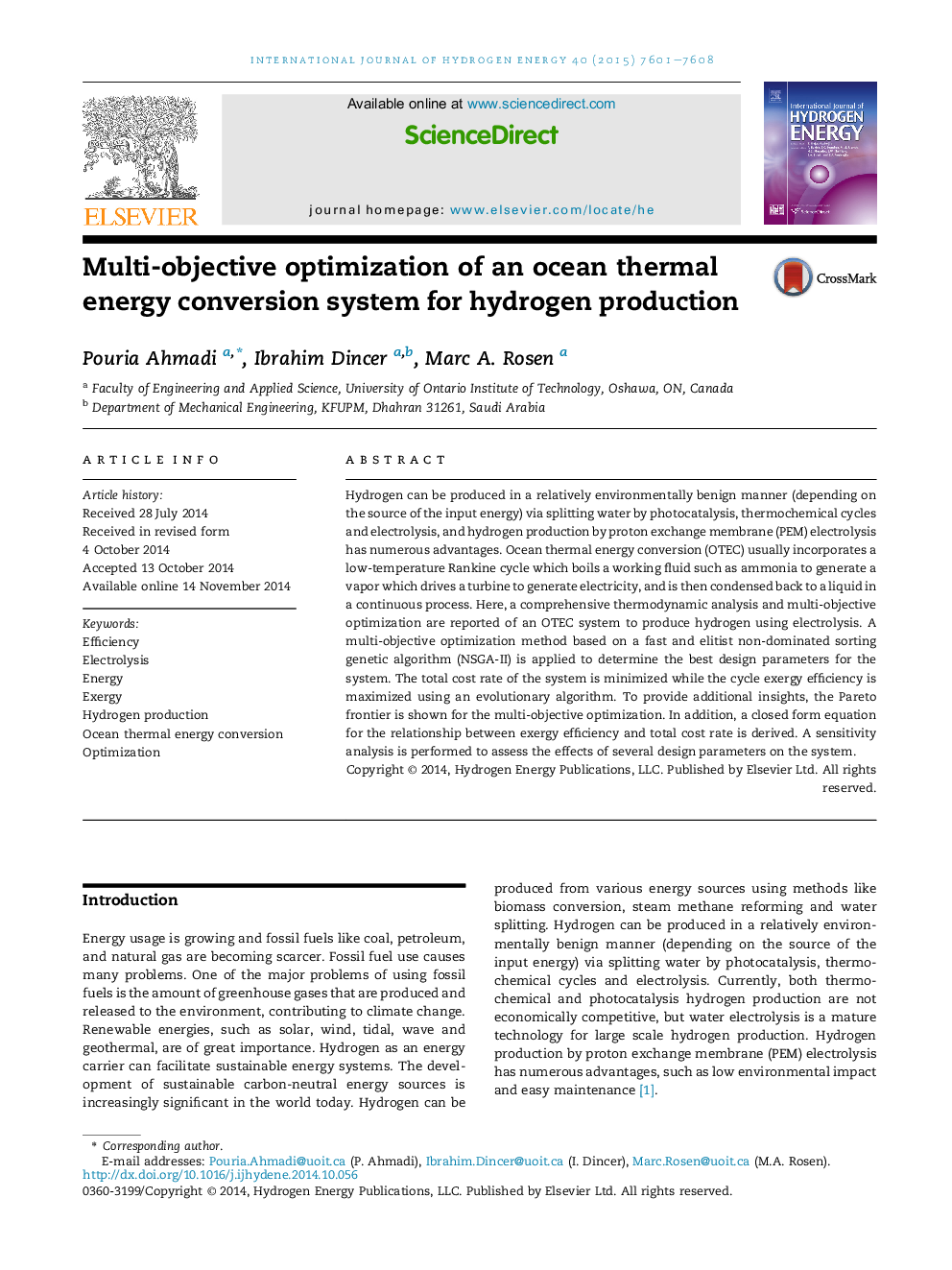| Article ID | Journal | Published Year | Pages | File Type |
|---|---|---|---|---|
| 1279734 | International Journal of Hydrogen Energy | 2015 | 8 Pages |
•To thermodynamically model an integrated energy system for hydrogen production.•To conduct exergy and economic analyses of this integrated system.•To apply a multi-objective optimization technique based on a code developed in the Matlab software.
Hydrogen can be produced in a relatively environmentally benign manner (depending on the source of the input energy) via splitting water by photocatalysis, thermochemical cycles and electrolysis, and hydrogen production by proton exchange membrane (PEM) electrolysis has numerous advantages. Ocean thermal energy conversion (OTEC) usually incorporates a low-temperature Rankine cycle which boils a working fluid such as ammonia to generate a vapor which drives a turbine to generate electricity, and is then condensed back to a liquid in a continuous process. Here, a comprehensive thermodynamic analysis and multi-objective optimization are reported of an OTEC system to produce hydrogen using electrolysis. A multi-objective optimization method based on a fast and elitist non-dominated sorting genetic algorithm (NSGA-II) is applied to determine the best design parameters for the system. The total cost rate of the system is minimized while the cycle exergy efficiency is maximized using an evolutionary algorithm. To provide additional insights, the Pareto frontier is shown for the multi-objective optimization. In addition, a closed form equation for the relationship between exergy efficiency and total cost rate is derived. A sensitivity analysis is performed to assess the effects of several design parameters on the system.
